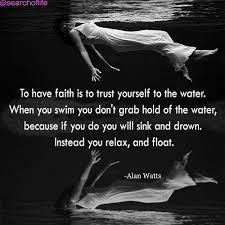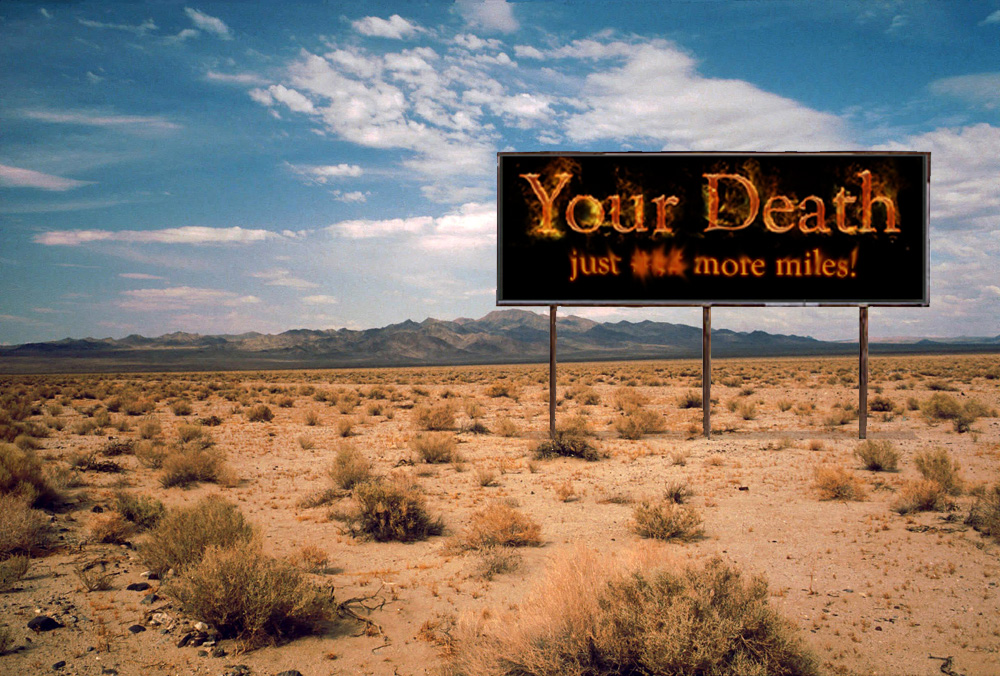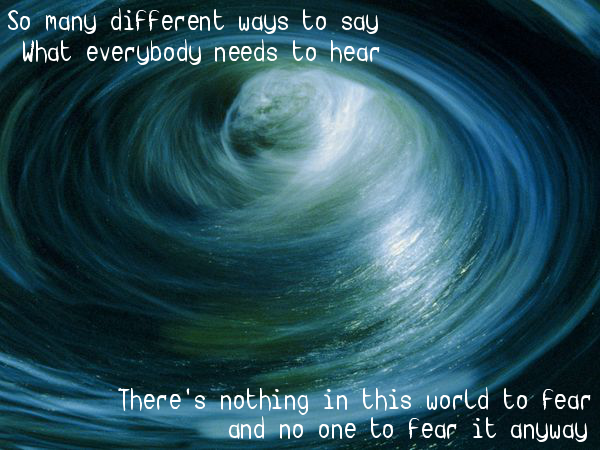“To one who has faith, no explanation is necessary. To one without faith, no explanation is possible.” —Thomas Aquinas
“Faith means not wanting to know what is true.” —Friedrich Nietzsche
“Anybody who has been seriously engaged in scientific work of any kind realizes that over the entrance to the gates of the temple of science are written the words: ‘Ye must have faith.'” —Max Planck
“Faith is the great cop-out, the great excuse to evade the need to think and evaluate evidence. Faith is belief in spite of, even perhaps because of, the lack of evidence.” —Richard Dawkins
“‘Cause I gotta have faith, faith, faith.” —George Michael
Like “God” and “divine,” faith is one of those pesky words that seems to erode the meaning of any sentence where it is placed rather than contribute to it.
 On one hand, there are intelligent people who tell us that faith is a kind of extrasensory perception and a necessary complement to reason in order to access a level of truth that is super-rational. On the other hand, there are intelligent people who tell us that is rubbish and that faith, as a synonym of belief, can only be an impediment to reason. Then there are others (Alan Watts was a great example) for whom faith is an antonym of belief, describing the trust and confidence to let go and accept the unknown.They are all true of course, and if you stitch them all together, you come up with a spectrum that covers the whole radius of the layered circle of Metatheology we introduced in this section’s homepage.
On one hand, there are intelligent people who tell us that faith is a kind of extrasensory perception and a necessary complement to reason in order to access a level of truth that is super-rational. On the other hand, there are intelligent people who tell us that is rubbish and that faith, as a synonym of belief, can only be an impediment to reason. Then there are others (Alan Watts was a great example) for whom faith is an antonym of belief, describing the trust and confidence to let go and accept the unknown.They are all true of course, and if you stitch them all together, you come up with a spectrum that covers the whole radius of the layered circle of Metatheology we introduced in this section’s homepage.
My definition of faith can be summed up in this quote that a friend shared with me recently, of which there are many variations and sources:
“Faith and fear cannot live in the same body at the same time”
 I love what that does to the concept of faith: It is simply the absence of fear. So simple, yet true across the whole spectrum. (Because religion is primarily concerned with the art of living gracefully given the inevitability of pain and impending death, for our purposes here I will define “fear” as our natural aversion to these persistent bugaboos.)
I love what that does to the concept of faith: It is simply the absence of fear. So simple, yet true across the whole spectrum. (Because religion is primarily concerned with the art of living gracefully given the inevitability of pain and impending death, for our purposes here I will define “fear” as our natural aversion to these persistent bugaboos.)
Since the idea that faith is not necessarily synonymous with belief will be a novel one to many in Judeo-Christian cultures, let’s explore that for a moment before looking at the spectrum.
Imagine you are driving along a highway, having a pleasant trip through some beautiful country, and suddenly out of the corner of your eye you see a big black sign with letters that glow like fire, saying:

The number is too blurry to read, but you’re spooked as hell now and need to know what it says. You try to go back for another look, but you realize that you can’t –you can’t even stop or slow down. Until that moment, you were pretty certain you were driving the car, but now you know the car is driving you.
In the back of your mind, you also know this coming event is literally not the end of the world –life will go on without you as it went on before you and continues to go on with you. But a very significant part of you feels desperate to know that it also won’t be the end of your world. For what is the point of this short, often difficult life if it can just go POOF at any moment and in the greater scheme of things it will be as if it never happened?
Exoteric religion, with its gospels, scriptures, and oral traditions that it takes either literally or with the slightest nod to their symbolism, offers an antidote to this fear in a belief that there is an invisible, non-corporeal counterpart to the physical self that will persist when the body disintegrates. The harbinger of death in this cryptic road sign, then, is not to be feared because this death does not kill the real you; the essential, eternal, existential self persists beyond this temporal experience. You will find that this truth persists throughout the spectrum of faith, though its nature will change dramatically.
Theology is the beginning of a trail of bread crumbs leading from literalism to esoteric practice to mystic experience and eventually into the cloud-hidden realm of metatheology. Most religious people, realizing they’ve found manna from heaven but ignoring the trail, crowd into the trailhead and fight over the limited apportionment of crumbs, and likewise most atheist rebuttals of faith only address this crowd because it is like shooting fish in a barrel. But faith, if it is the absence of fear, and is to be a journey rather than a destination, implies an undertaking and a venturing down this trail, armed with beliefs at first perhaps, but increasingly only with confidence and trust –the other side of the prosaic definition of faith.
So you can have faith in words written by someone else, as at the outermost layer of the diagram, describing events you never experienced, creating a certainty you don’t fully understand, but still, there goes the fear –except, perhaps, for the creeping anxiety called “doubt,” the low-grade fear that you don’t have the “right” words, or you aren’t doing the right things with them, and so on. It is still a rather egocentric faith, in other words, and if this is the only source of your faith, you will defend those words beyond your own death. This is the aspect of religion with which we are all too familiar, and probably would be better off without…if not for the bread crumb trail leading away from it.
Because you can also have faith instilled by new insights from the multidimensional inkblot test of religion that revealed deeper truths than what you could access before. Maybe those words and symbols constructed by someone else stirred something in you and suddenly became very personal, a small shift by the lever of metaphor causing a large portion of your inner being to rise up. Maybe the rising is temporary, maybe not, but while it is risen there is no room in the vessel for fear. This is the beginning of the experiential aspect of religion, encouraged by esoteric practices specific to each tradition, found in the middle blue circle. Most mainstream churches dabble in esoterica, dipping their toes in it from the safety of the outer circle, but without the full immersion that would make further progress toward the center possible.
In pantheistic modes of thought –which are found closer to the center– faith becomes less about adherence to verbal professions of literal beliefs, and more about the suspension of belief in linear time as an absolute, despite the pervasive evidence of rational thought and the measurable fact that 78 seconds of my lifetime passed in the typing of this sentence. In other words, linear time is experientially true but ontologically false, such as how a road sign recedes behind you and eventually disappears beyond the horizon as you drive away from it, even though in reality we know it neither diminishes nor disappears.
 As non-dual thought compels your sense of self to expand from a single passenger in the car to a field which includes the sign and all the space in between, the importance of the progression of time-space toward your personal doom is what recedes and eventually disappears behind an event horizon that is alternately called enlightenment, salvation, metanoia, moksha, et al. You will still experience the progression of time, but you will know it is occurring within the context of a greater self that is timeless –perhaps best rendered as a tiny segment within the constant arc of a circle. Your life is the segment, but Life itself is the circle, and pantheism informs us that you are That.
As non-dual thought compels your sense of self to expand from a single passenger in the car to a field which includes the sign and all the space in between, the importance of the progression of time-space toward your personal doom is what recedes and eventually disappears behind an event horizon that is alternately called enlightenment, salvation, metanoia, moksha, et al. You will still experience the progression of time, but you will know it is occurring within the context of a greater self that is timeless –perhaps best rendered as a tiny segment within the constant arc of a circle. Your life is the segment, but Life itself is the circle, and pantheism informs us that you are That.
It is important to note the even the most exoteric religions are an attempt to rationalize the co-existence of linear time and eternity through symbolic language, such as in Christianity, in which the life of Christ models the birth-death-rebirth cycle of Nature. The difference between the trailhead and the trail is solely based on one’s individual comfort level in leaving literalism and duality behind and venturing into contemplation of the symbols as archetypes of something greater, non-dual, and more intangible but superrationally real. Whereas exoteric belief compels us to accept that the Jesus character is literally the theos, in esoteric faith, this becomes more of a trust that Jesus, declaring himself one with the Father and “the Life,” personifies a holistic image of God as Creator and creation undivided. He metaphorically represents Life in his sacrificial atonement because his birth-death-rebirth cycle is symbolic of what all Life experiences, not individually but as a whole. So esoteric faith is about letting go of narcissistic attachment to the limited life of the mortal self and identifying with Life or Existence itself, represented by Christ. (Krishna imparts a very similar lesson to the mortal Arjuna in the Bhagavad-Gita.)
Going further inward, you can also have faith because, at some point of supersaturation of insight in your mind or for no discernible reason at all [1], love rushes in and pushes fear out. Something unknown gives you confidence that you can accept whatever happens around that bend in the road. Something tells you that it never stops bending, and the road leads home in a full circle. Maybe you’ve become so confident in that circle that you’ve lost all sense that there was a starting point called birth, so the idea of crossing a finish line became meaningless.
The mystic experience of the inner circle happens when the letting go of the individual self is complete. It is the actual awakening to the reality that the “I” experience of selfhood is tantamount to being Life itself –called agape (ah-GAH-pay) love in Christianity, shanti in the Vedanta, satchitananda in Buddhism. To the Christian mystic, the universe is the Body of Christ, and the Eucharist (the ceremony commemorating the Last Supper, in which bread and wine are consecrated and consumed) is a ritual dramatization of the process by which Life perpetuates Life by self-sacrifice.
 This is the fully experiential aspect of faith, the beginning of actual awareness of oneself as a unique manifestation or fractal of the Whole. The “I” experience is real and present, but it is known to belong to the universal Self, called by the various names shown in the inner circle. Cultural specificity is minimal though, as mystics tend to speak a language more similar to each other than the one from which they originated.
This is the fully experiential aspect of faith, the beginning of actual awareness of oneself as a unique manifestation or fractal of the Whole. The “I” experience is real and present, but it is known to belong to the universal Self, called by the various names shown in the inner circle. Cultural specificity is minimal though, as mystics tend to speak a language more similar to each other than the one from which they originated.
When you reach the final stage of faith, you’ve stopped being a vessel that can carry fear. Light doesn’t shine on itself, and water doesn’t carry water. If you cease to be a container for your emotions, where do they go?
Metatheology, represented by the wordless red dot in the center, ventures beyond the “I” and names altogether, where even ideas like God, Logos, Brahman, Tao etc are too constraining. According to Eknath Easwaran in the introduction to his translation of the Upanishads, this corresponds with a state of yogic practice called turiya —literally “the fourth,” for it lies beyond waking, dreaming, and dreamless sleep. Turiya is like waking up in dreamless sleep, in the very depths of the unconscious, where one is aware of neither body nor mind. And when one comes back into the temporal sense of self from turiya, all previous identities resulting from social conditioning, even the limitations of space and time, are seen as the shadow puppets and temporary illusions they are. As the Sufi poet Ḥāfeẓ-e Shīrāzī wrote (translated by Daniel Ladinsky):
I
Have
Learned
So much from God
That I can no longer
Call
MyselfA Christian, a Hindu, a Muslim,
A Buddhist, a Jew.The Truth has shared so much of Itself
With meThat I can no longer call myself
A man, a woman, an angel,
Or even pure
Soul.Love has
Befriended Hafiz so completely
It has turned to ash
And freed
MeOf every concept and image
My mind has ever known.
With a faith such as this, a drop of water becomes the Ocean.
How far you go from mere belief along the trail of faith is a matter of individual will –or, you could say, it begins as a matter of will, then becomes a matter of letting go of the will and trusting yourself to float on the water…and then simply being the water. But at every step along the path, there is nothing to fear, and no one to fear it anyway.
[1] It should be noted that not everyone begins at the trailhead of faith. Some people, the author included, have experiences that drop them, with a graceful dive or ungraceful plunk, into mysticism or even metatheology. They often feel compelled to follow the breadcrumb trail back to something more familiar to get their bearings.




Well said. The footnote in particular, caused a resonance within me. I’m glad you included it.